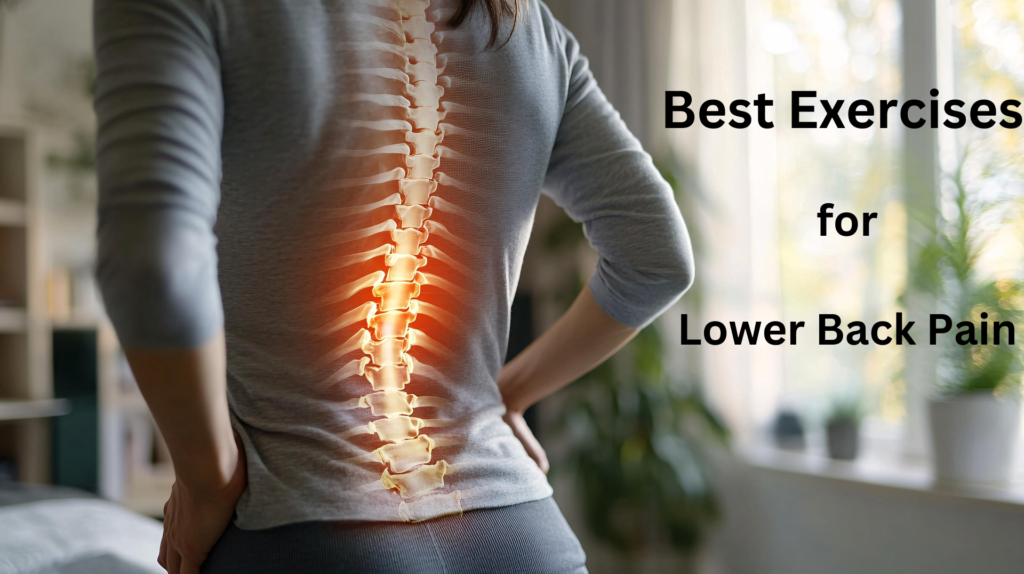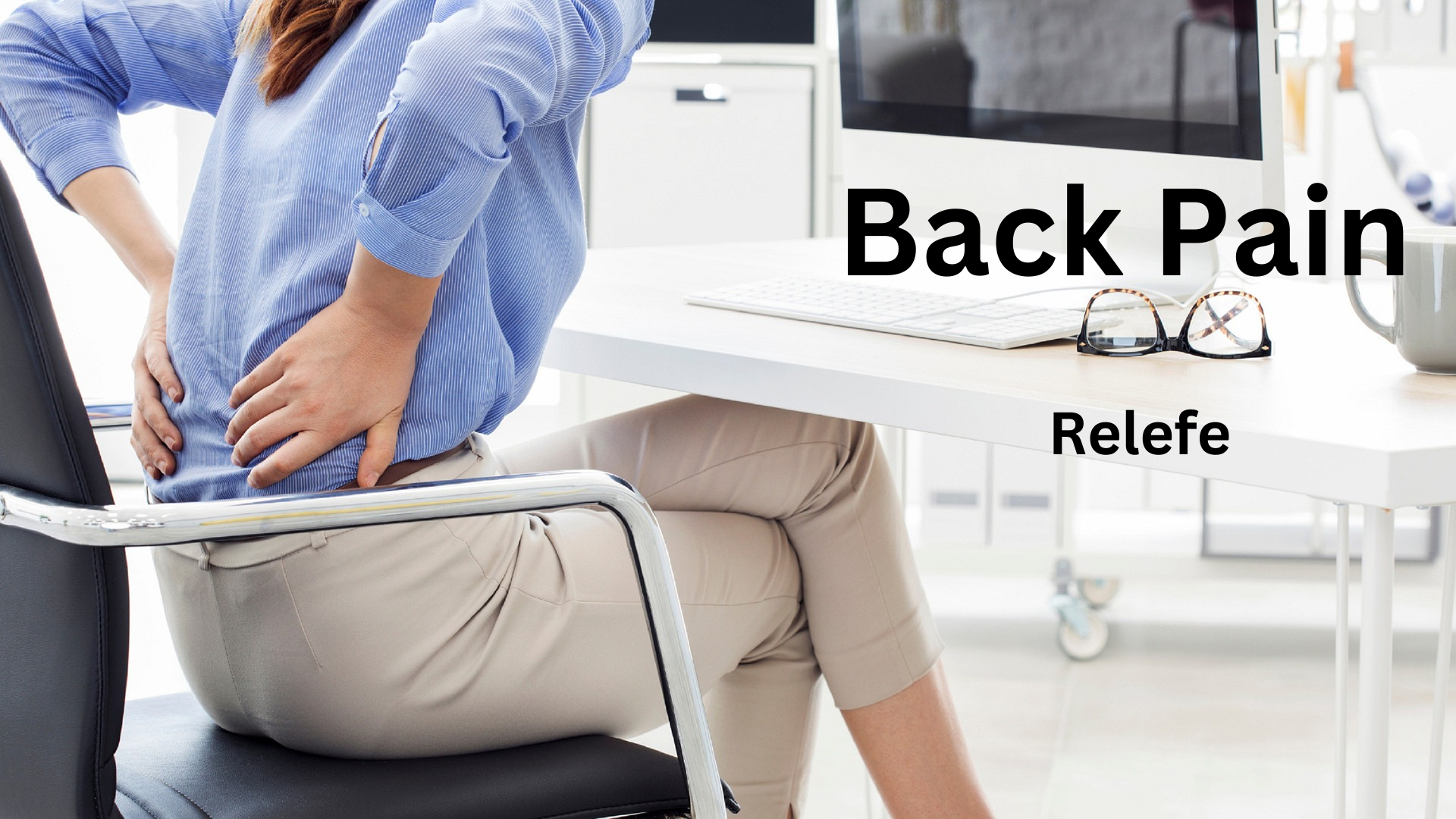Lower back pain is a common issue that affects millions of people worldwide. It can range from mild discomfort to debilitating pain, making everyday tasks difficult. Fortunately, exercise has been proven to be one of the most effective treatments for lower back pain. By strengthening the muscles that support the spine and improving flexibility, the right exercises can alleviate pain and prevent future episodes.
In this article, we’ll explore the best exercises for lower back pain, how they help, and provide tips for incorporating them into your daily routine. The focus keyword for this blog post is “best exercises for lower back pain,” which will be used throughout the text to ensure the content is both informative and SEO-friendly.
Table of Contents
Understanding Lower Back Pain
Lower back pain is a common health issue that affects millions of people globally. It can range from mild discomfort to severe, debilitating pain that impacts daily life. Lower back pain can result from various causes, including lifestyle factors, underlying medical conditions, or injury.
Anatomy of the Lower Back
The lower back, also known as the lumbar region, consists of several key structures:
- Vertebrae: Bones that form the spine.
- Discs: Soft cushions between the vertebrae that absorb shock.
- Ligaments and Tendons: Tissues that hold the vertebrae together and attach muscles to bones.
- Muscles: Provide strength and mobility to the back.
- Nerves: Including the sciatic nerve, which runs from the lower back down the legs.
Lower back pain may originate from any of these structures due to injury, wear and tear, or other health conditions.
Common Causes of Lower Back Pain
- Muscle Strain or Sprain
One of the most common causes of lower back pain is muscle strain or ligament sprain. These injuries can occur due to sudden movements, lifting heavy objects, poor posture, or overuse. Muscle strains typically cause sharp pain that worsens with movement. - Herniated or Bulging Disc
The discs in the spine act as cushions between the vertebrae. A herniated or bulging disc occurs when the inner material of the disc pushes through its outer layer, pressing on nearby nerves. This condition can cause significant pain, particularly if the sciatic nerve is affected, resulting in sciatica (pain radiating down one or both legs). - Degenerative Disc Disease
Over time, the discs in the spine can lose hydration and elasticity, leading to degenerative disc disease. This can cause the discs to shrink and reduce their ability to cushion the vertebrae, contributing to chronic lower back pain. - Spinal Stenosis
Spinal stenosis occurs when the spinal canal narrows, putting pressure on the spinal cord or nerves. This condition typically affects older adults and can lead to pain, numbness, or weakness in the lower back and legs. - Arthritis
Osteoarthritis can affect the joints in the lower back, leading to inflammation, stiffness, and pain. Rheumatoid arthritis, an autoimmune condition, can also impact the spine. - Injury or Trauma
Accidents, falls, or sports injuries can damage the muscles, ligaments, or discs in the lower back. Injuries can result in immediate or delayed pain depending on the extent of the damage. - Poor Posture and Sedentary Lifestyle
Sitting for long periods, slouching, or using improper body mechanics can contribute to lower back pain. Prolonged poor posture places extra stress on the lower back muscles and spine, leading to discomfort and potential injury. - Osteoporosis
Osteoporosis is a condition in which bones become brittle and weak, increasing the risk of fractures. Compression fractures in the spine due to osteoporosis can lead to chronic lower back pain. - Scoliosis and Other Spinal Deformities
Scoliosis, a sideways curvature of the spine, can cause imbalances in the back, leading to pain. Other spinal deformities or structural issues, such as kyphosis or lordosis, can also contribute to lower back discomfort. - Chronic Conditions and Diseases
Certain medical conditions, such as fibromyalgia, ankylosing spondylitis, or kidney infections, may cause or exacerbate lower back pain. Chronic pain syndromes can lead to long-term discomfort and reduced quality of life.
Symptoms of Lower Back Pain
Lower back pain can present in several ways depending on the cause and severity of the condition:
- Aching or Stiffness: A dull, constant ache or stiffness in the lower back.
- Sharp Pain: Sudden, intense pain that can radiate to the buttocks or legs.
- Limited Mobility: Difficulty bending, standing, or sitting due to discomfort.
- Muscle Spasms: Involuntary contractions or tightness in the lower back muscles.
- Radiating Pain: Pain that travels down the leg, often associated with sciatica.
- Numbness or Tingling: A sensation of pins and needles, particularly in the legs or feet, if nerves are compressed.
Risk Factors for Lower Back Pain
Certain factors increase the risk of developing lower back pain:
- Age: The likelihood of experiencing lower back pain increases with age, particularly after 30, as the spine naturally degenerates.
- Weight: Excess body weight puts additional strain on the spine, contributing to pain.
- Occupation: Jobs that involve heavy lifting, bending, or prolonged sitting can increase the risk of back injury.
- Lack of Physical Activity: A sedentary lifestyle weakens the muscles that support the spine.
- Smoking: Smoking impairs blood flow to the discs in the spine, leading to faster degeneration.
- Stress: Psychological stress can cause muscle tension, contributing to lower back pain.
Diagnosis and Treatment of Lower Back Pain
Diagnosis of lower back pain often begins with a physical examination, medical history review, and, if necessary, imaging tests (such as X-rays, MRIs, or CT scans). Depending on the underlying cause, treatment options may include:
- Rest and Activity Modification: Short-term rest, followed by a gradual return to normal activities, can help alleviate pain from a muscle strain or injury.
- Physical Therapy: Exercises designed to strengthen the back muscles, improve flexibility, and promote proper posture can help prevent future pain.
- Medications: Over-the-counter pain relievers, such as NSAIDs (nonsteroidal anti-inflammatory drugs), may help reduce inflammation and pain. For more severe cases, prescription medications may be necessary.
- Heat and Cold Therapy: Applying heat or cold packs to the affected area can reduce pain and muscle spasms.
- Chiropractic Care: Chiropractic adjustments can help realign the spine and reduce pain from conditions such as herniated discs.
- Injections: Corticosteroid injections may be used to reduce inflammation in cases of severe pain.
- Surgery: In extreme cases, surgical intervention may be necessary, particularly for conditions like herniated discs or spinal stenosis.
Prevention and Lifestyle Adjustments
Preventing lower back pain often involves making lifestyle changes to protect the spine and maintain back health:
Sleep on a Supportive Mattress: A mattress that provides proper support for your spine can help prevent lower back pain.
Exercise Regularly: Engage in activities that strengthen core muscles, improve flexibility, and promote good posture (e.g., yoga, swimming, or walking).
Maintain a Healthy Weight: Reducing excess weight can alleviate pressure on the spine.
Practice Good Posture: Avoid slouching while sitting or standing, and lift heavy objects with proper body mechanics (using your legs, not your back).
Stay Active: Avoid prolonged sitting or standing; take frequent breaks to move and stretch.
1. Cat-Cow Stretch
The Cat-Cow stretch is a gentle warm-up exercise that helps improve flexibility and mobility in the spine. It’s particularly beneficial for reducing tension in the lower back muscles.
How to Perform:
- Start on your hands and knees in a tabletop position, with your wrists aligned under your shoulders and knees under your hips.
- Inhale deeply, arch your back, and tilt your pelvis toward the ceiling while dropping your belly toward the floor (Cow position).
- Exhale as you round your back, tucking your chin to your chest and drawing your belly toward your spine (Cat position).
- Continue alternating between Cat and Cow for 10-15 repetitions.
The Cat-Cow stretch helps increase circulation in the spine, improves mobility, and stretches the lower back, making it one of the best exercises for lower back pain.
2. Child’s Pose
Child’s Pose is a relaxing yoga stretch that gently stretches the lower back, hips, and thighs. It’s also a great way to calm the mind and reduce stress, which can sometimes exacerbate back pain.
How to Perform:
- Begin on your hands and knees in a tabletop position.
- Slowly lower your hips back toward your heels while extending your arms out in front of you.
- Allow your forehead to rest on the floor and hold the stretch for 30 seconds to 1 minute.
- Focus on deep breathing as you relax into the stretch.
Child’s Pose is excellent for stretching the lower back and relieving tension, making it another one of the best exercises for lower back pain.
3. Pelvic Tilts
Pelvic tilts help strengthen the lower abdominal muscles, which play a crucial role in supporting the lower back. This exercise also promotes better posture and spinal alignment.
How to Perform:
- Lie on your back with your knees bent and feet flat on the floor, hip-width apart.
- Place your arms at your sides and relax your shoulders.
- Gently engage your core muscles and press your lower back into the floor by tilting your pelvis upward.
- Hold the position for 5 seconds, then release and return to the starting position.
- Repeat for 10-15 repetitions.
Pelvic tilts are one of the best exercises for lower back pain because they strengthen the muscles that stabilize the spine, helping to prevent future injuries.
4. Bridge Pose
Bridge Pose is a great exercise for strengthening the glutes, hamstrings, and lower back. It also promotes stability in the pelvis and spine, reducing the risk of lower back pain.
How to Perform:
- Lie on your back with your knees bent and feet flat on the floor, hip-width apart.
- Place your arms at your sides and press your palms into the floor.
- Slowly lift your hips off the floor, forming a straight line from your shoulders to your knees.
- Hold the position for 5-10 seconds, then lower your hips back to the floor.
- Repeat for 10-15 repetitions.
Bridge Pose is not only one of the best exercises for lower back pain, but it also strengthens the entire posterior chain, improving posture and reducing strain on the lower back.
5. Knee-to-Chest Stretch
The knee-to-chest stretch is an effective exercise for lengthening the lower back muscles and relieving tension. It’s especially helpful for those who experience tightness in the lumbar region.
How to Perform:
- Lie on your back with your knees bent and feet flat on the floor.
- Slowly bring one knee toward your chest, holding it with both hands.
- Gently pull the knee closer to your chest while keeping the other foot on the floor.
- Hold the stretch for 20-30 seconds, then switch to the other leg.
- Repeat 2-3 times on each side.
The knee-to-chest stretch is one of the best exercises for lower back pain because it helps release tension in the lower back muscles and promotes relaxation.
6. Bird Dog
The Bird Dog exercise is excellent for improving core stability and balance. It targets the muscles in the lower back, glutes, and abs, helping to create a more stable and strong spine.
How to Perform:
- Start on your hands and knees in a tabletop position.
- Extend your right arm forward while simultaneously extending your left leg backward, forming a straight line from your hand to your foot.
- Hold the position for 5-10 seconds, then return to the starting position.
- Repeat on the opposite side, extending your left arm and right leg.
- Perform 10-15 repetitions on each side.
The Bird Dog is one of the best exercises for lower back pain because it strengthens the muscles that support the spine and improves overall stability.
7. Supine Twist
The Supine Twist is a gentle stretch that helps increase mobility in the spine and relieve tension in the lower back. It’s also a great way to stretch the muscles in the hips and glutes.
How to Perform:
- Lie on your back with your arms extended out to the sides, forming a “T” shape.
- Bend your knees and bring them up toward your chest.
- Slowly lower your knees to one side while keeping your shoulders flat on the floor.
- Hold the stretch for 20-30 seconds, then switch to the other side.
- Repeat 2-3 times on each side.
The Supine Twist is one of the best exercises for lower back pain because it helps improve spinal mobility and reduce stiffness.

8. Seated Forward Bend
The Seated Forward Bend is a gentle stretch that targets the hamstrings and lower back. Tight hamstrings can often contribute to lower back pain, so this exercise helps improve flexibility in both areas.
How to Perform:
- Sit on the floor with your legs extended straight in front of you.
- Inhale deeply, then exhale as you hinge forward from your hips, reaching toward your toes.
- Keep your spine long and avoid rounding your back.
- Hold the stretch for 30 seconds to 1 minute.
- Focus on deep breathing as you relax into the stretch.
The Seated Forward Bend is one of the best exercises for lower back pain because it helps release tightness in the hamstrings and lower back, reducing strain on the spine.
9. Wall Sits
Wall sits are an excellent exercise for strengthening the muscles in the legs and lower back. By improving leg strength, you can reduce the load on your lower back and prevent pain.
How to Perform:
- Stand with your back against a wall and your feet about 2 feet away from the wall, hip-width apart.
- Slowly slide down the wall until your thighs are parallel to the floor, as if sitting in an invisible chair.
- Hold the position for 20-30 seconds, then slowly slide back up the wall.
- Repeat for 5-10 repetitions.
Wall sits are one of the best exercises for lower back pain because they help strengthen the muscles that support the spine, reducing the risk of injury.
10. Cobra Pose
Cobra Pose is a gentle backbend that stretches the spine, chest, and abdomen. It helps improve spinal mobility and reduce tension in the lower back.
How to Perform:
- Lie on your stomach with your legs extended and your hands placed under your shoulders.
- Press into your hands and lift your chest off the floor, keeping your elbows slightly bent.
- Hold the position for 10-15 seconds, then slowly lower back down.
- Repeat for 5-10 repetitions.
Cobra Pose is one of the best exercises for lower back pain because it helps lengthen the spine and improve posture.
Tips for Exercising with Lower Back Pain
While these exercises are highly beneficial, it’s important to follow a few guidelines to ensure you get the best results and avoid further injury:
- Start slowly: If you’re new to exercise or recovering from an injury, start with gentle stretches and gradually increase
the intensity of your workouts. 2. Listen to your body: If you experience sharp or worsening pain during any exercise, stop immediately and consult a healthcare professional. 3. Focus on form: Proper form is essential for preventing injury. Take your time to learn each exercise correctly before increasing the difficulty. 4. Incorporate rest: Give your muscles time to recover by resting between workouts. Aim for 2-3 days of exercise per week, with rest days in between. 5. Consult a professional: If you have chronic or severe lower back pain, consult a physical therapist or healthcare provider for personalized exercise recommendations.
Conclusion
Incorporating the best exercises for lower back pain into your routine can help you manage and alleviate discomfort while strengthening the muscles that support your spine. Whether you’re dealing with occasional pain or chronic issues, these exercises can improve your flexibility, mobility, and overall quality of life.
Remember to start slowly, focus on proper form, and listen to your body as you progress. With consistency and patience, you’ll experience relief from lower back pain and prevent future flare-ups.

